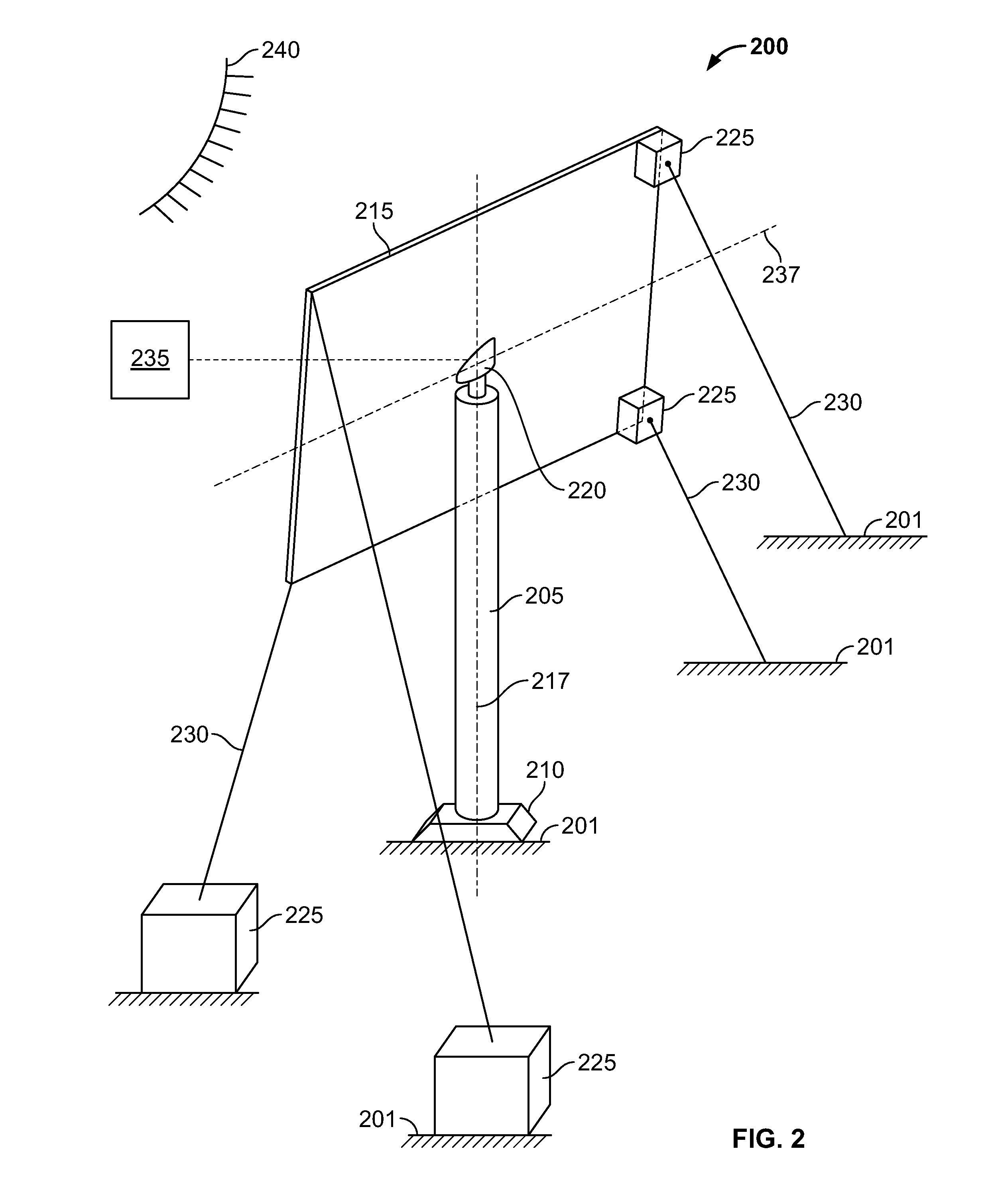Controlling Movement of a Solar Energy Member
a solar energy and solar energy technology, applied in the direction of solar heat collectors, lighting and heating equipment, instruments, etc., can solve the problems of high reduction ratio of gearboxes, unstable operation platform and/or structure, and high cost of gearboxes
- Summary
- Abstract
- Description
- Claims
- Application Information
AI Technical Summary
Benefits of technology
Problems solved by technology
Method used
Image
Examples
Embodiment Construction
[0050]In some general embodiments, a solar energy system includes a solar energy member, such as a heliostat mirror or PV panel, which is mounted to a substantially vertical support member. One or more actuator assemblies, such as electric motors, are coupled to the solar energy member to facilitate steady-state movement of the solar energy member to track a location of the Sun. The actuator assemblies may further account for other steady-state loads on the solar energy system, such as steady wind loads, and maintain a proper position (e.g., pointing angle) of the solar energy member relative to the Sun. Periodically, the solar energy system may experience one or more transient, or dynamic loads, such as, for example, due to wind gusts. The solar energy system may include one or more damper assemblies to substantially diminish the impact of the transient loads. The damper assembly can include a damper coupled to a spool around which a cable coupled to the solar energy member may be ...
PUM
 Login to View More
Login to View More Abstract
Description
Claims
Application Information
 Login to View More
Login to View More - R&D
- Intellectual Property
- Life Sciences
- Materials
- Tech Scout
- Unparalleled Data Quality
- Higher Quality Content
- 60% Fewer Hallucinations
Browse by: Latest US Patents, China's latest patents, Technical Efficacy Thesaurus, Application Domain, Technology Topic, Popular Technical Reports.
© 2025 PatSnap. All rights reserved.Legal|Privacy policy|Modern Slavery Act Transparency Statement|Sitemap|About US| Contact US: help@patsnap.com



